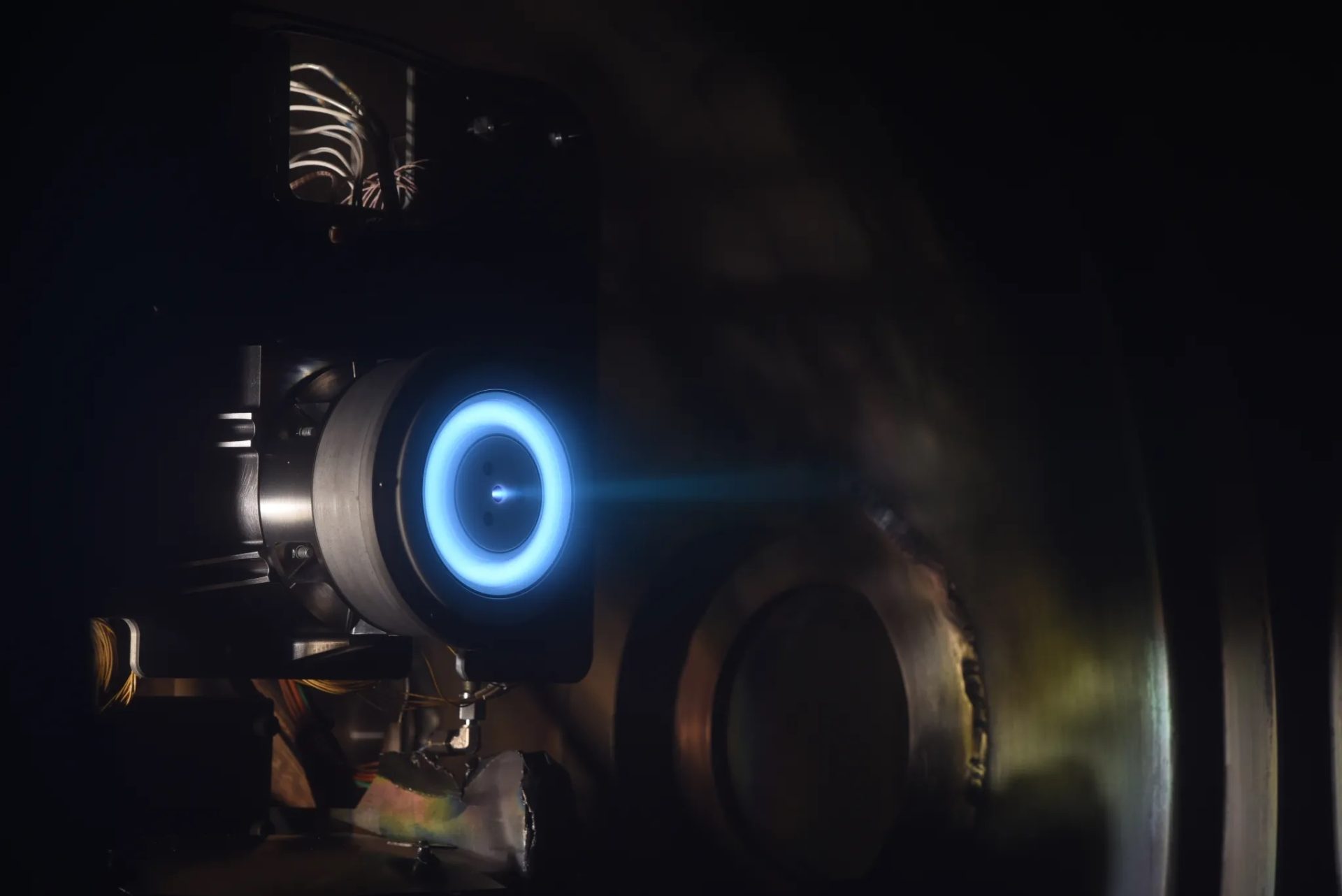During the Space Race, scientists in both the United States and the Soviet Union investigated the concept of ion propulsion. Like many early Space Age proposals, the concept was originally explored by luminaries like Konstantin Tsiolkovsky and Hermann Oberth – two of the “forefathers of rocketry.” Since then, the technology has been validated repeatedly by missions like the Deep Space-1 (DS-1) technology demonstrator, the ESA’s Smart-1 lunar orbiter, JAXA’s Hayabusa and Hayabysa 2 satellites, and NASA’s Dawn mission.
Looking to the future of space exploration, researchers at the NASA Glenn Research Center (GRC) have been busy developing a next-generation ion engine that combines extreme fuel efficiency with high acceleration. These efforts have led to the NASA-H71M sub-kilowatt Hall-effect thruster, a small spacecraft electric propulsion (SSEP) system that will enable new types of planetary science missions. With the help of commercial partners like SpaceLogistics, this thruster will also be used to extend the lifetimes of spacecraft that are already in orbit.
Space exploration and commercial space have benefitted from the development of small spacecraft and small satellites. These missions are notable for being cost-effective since they require less propellant to launch, can be deployed in smarms, and take advantage of rideshares. Similarly, the proliferation of small satellite constellations in Low Earth Orbit (LEO) has made low-power Hall-effect thrusters the most common electric propulsion system in space today. These systems are noted for their fuel efficiency, allowing many years of orbital maneuvers, corrections, and collision avoidance.
Nevertheless, small spacecraft will need to be able to perform challenging propulsive maneuvers like achieving escape velocity, orbital capture, and other maneuvers that require significant acceleration (delta-v). The thrust required to perform these maneuvers – 8 km/s (~5 mps) of delta-v – is beyond the capability of current and commercially available propulsion technology. Moreover, low-cost commercial electric propulsion systems have limited lifetimes and typically process only about 10% of a small spacecraft’s propellant mass.
Similarly, secondary spacecraft are becoming more common thanks to rockets with excess capacity (enabling rideshare programs). Still, these are generally limited to scientific targets that align with the primary mission’s trajectory. Additionally, secondary missions typically have limited time to collect data during high-speed flybys. What is needed is an electric propulsion system that requires low power (sub-kilowatt) and has high-propellant throughout – meaning it is capable of using lots of propellant over its lifetime.
To meet this demand, engineers at NASA Glenn are taking many advanced high-power solar electric propulsion (SEP) elements developed over the past decade and are miniaturizing them. These elements were developed as part of NASA’s Moon to Mars mission architecture, with applications including the Power and Propulsion Element (PPE) of the Lunar Gateway. A SEP system was also part of the design for a Deep Space Transport (DST), the vehicle that will conduct the first crewed missions to Mars by 2040. The NASA-H71M system, however, is expected to have a major impact on small spacecraft, expanding mission profiles and durations.
According to NASA, missions using the NASA-H71M system could operate for 15,000 hours and process over 30% of the small spacecraft’s initial mass in propellant. This system could increase the reach of secondary spacecraft, allowing them to deviate from the primary mission’s trajectory and explore a wider range of scientific targets. By allowing spacecraft to decelerate and make orbital insertions, this technology could increase mission durations and the amount of time they have to study objects.
It’s also beyond the needs of most commercial LEO missions, and the associated costs are generally higher than what commercial missions call for. As such, NASA continues to seek partnerships with commercial developers working on small commercial spacecraft with more ambitious mission profiles. One such partner is SpaceLogistics, a wholly owned subsidiary of Northrop Grumman that provides in-orbit satellite servicing to geosynchronous satellite operators using its proprietary Mission Extension Vehicle (MEV).
This vehicle relies on Northrop Grumman NGHT-1X Hall-effect thrusters based on the NASA-H71M design. This propulsive capability will allow the MEV to reach satellites in Geosynchronous Earth Orbit (GEO), where it will dock with customer’s satellites, extending their lives for at least six years. Through a Space Act Agreement (SAA), Northrop Grumman is conducting long-duration wear tests (LDWT) at NASA Glenn’s Vacuum Facility 11. The first three MEP spacecraft are expected to launch in 2025 and extend the lives of three GEO communication satellites.
Further Reading: NASA


